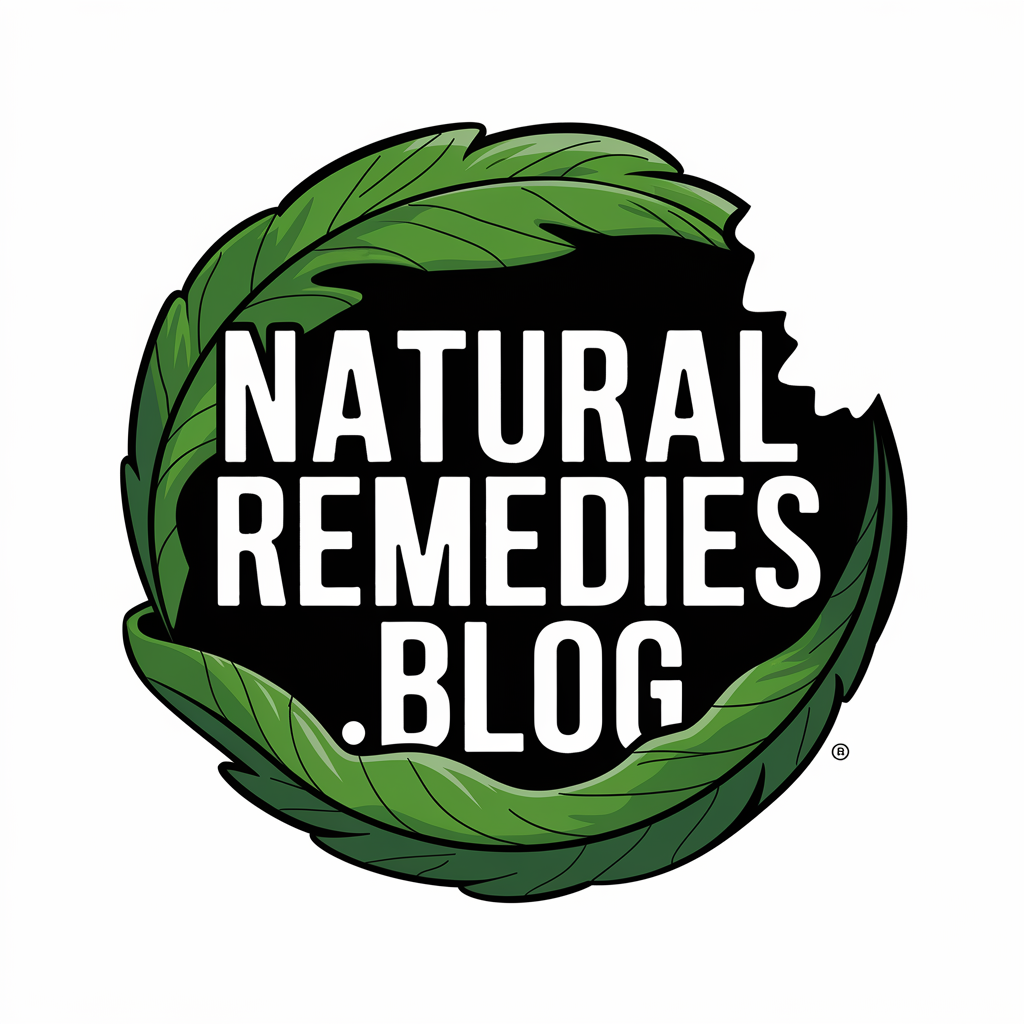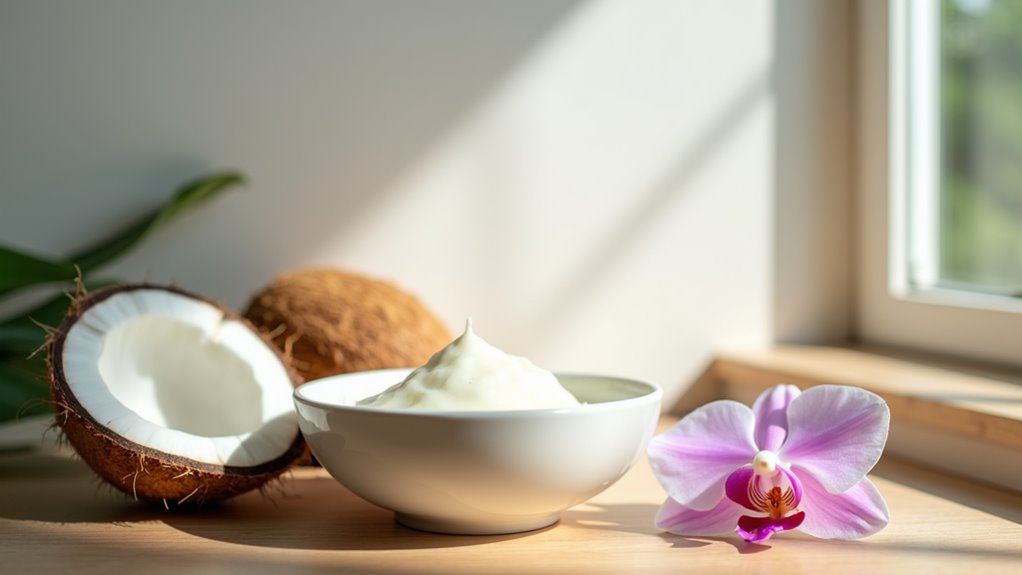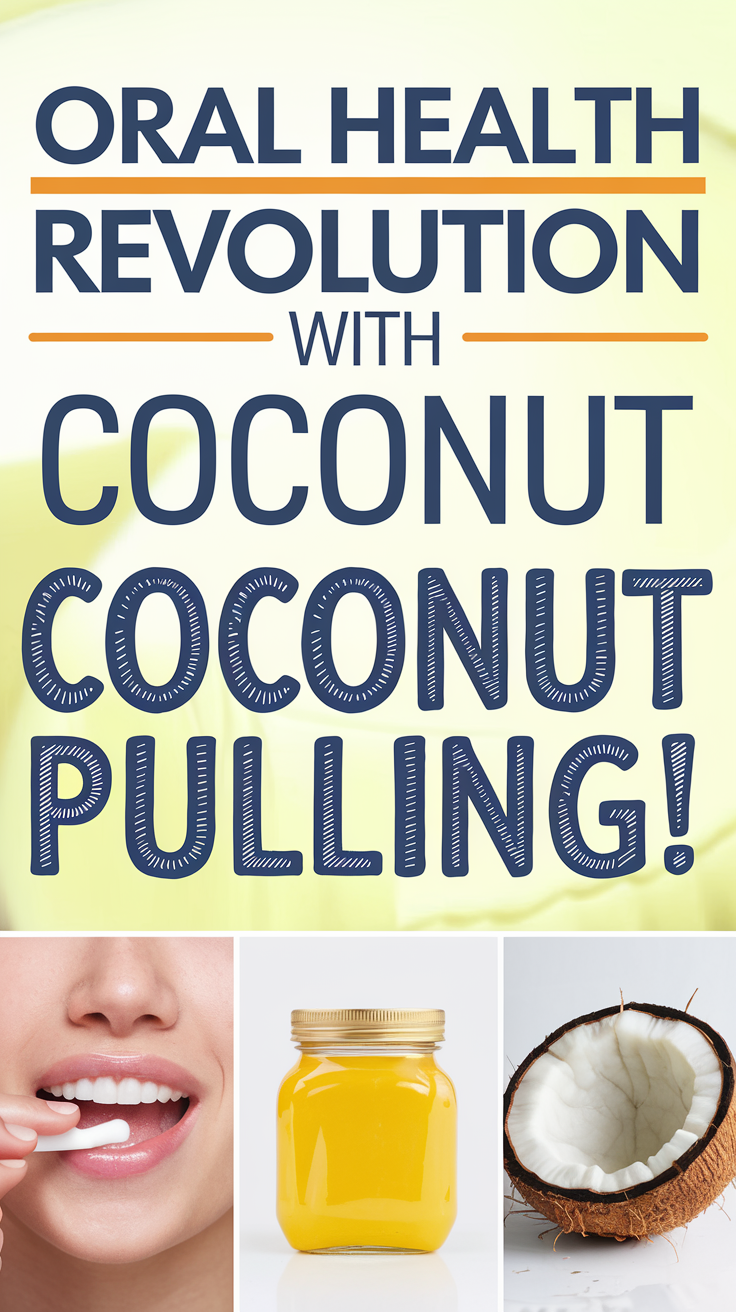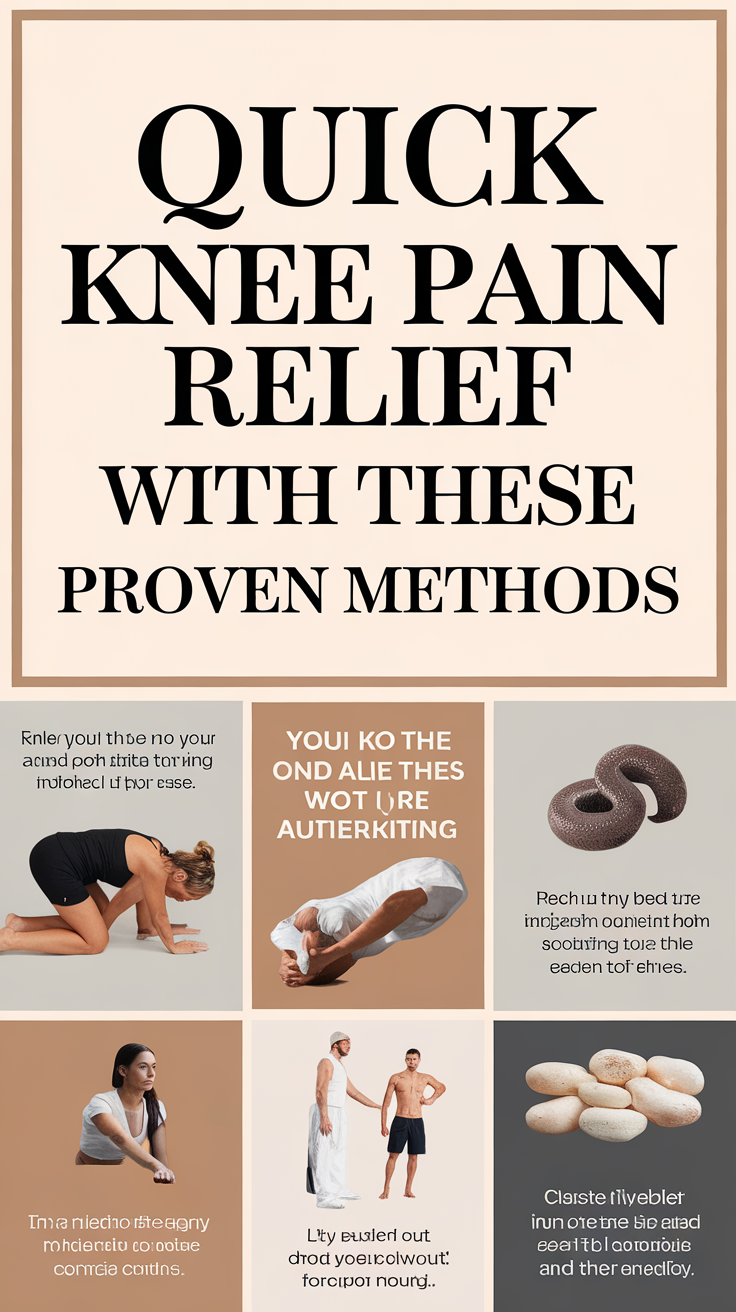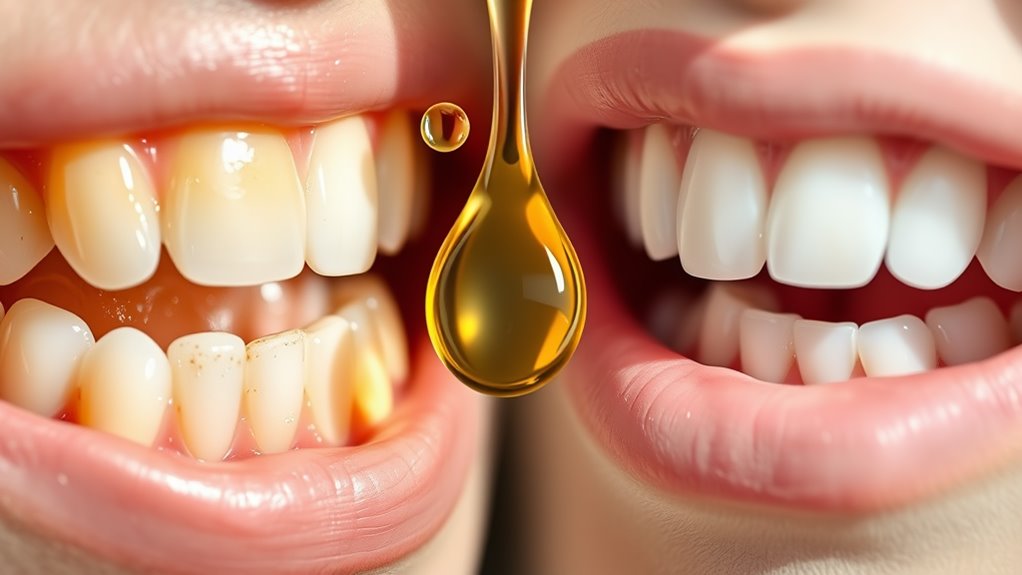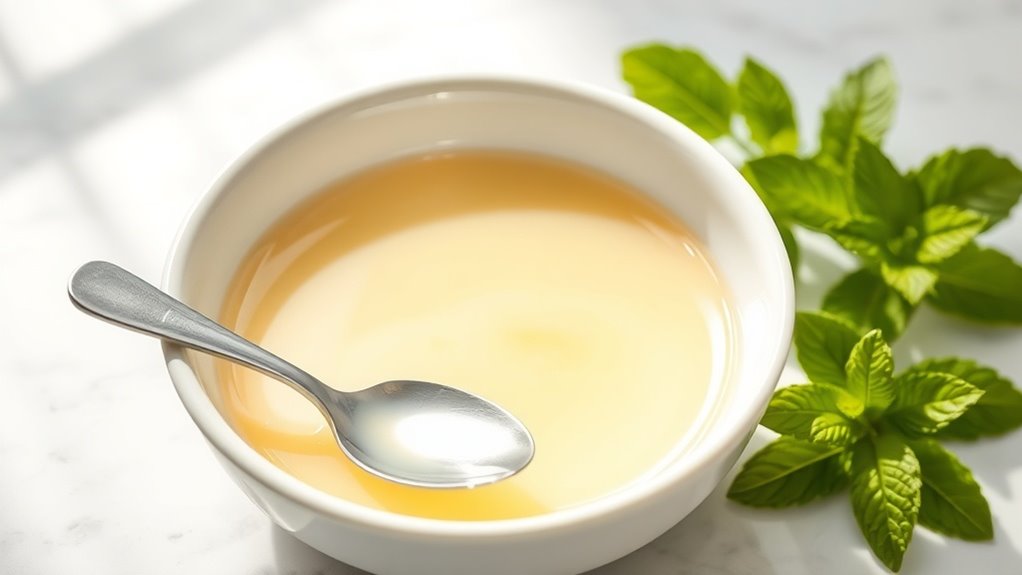Oral Health Revolution With Coconut Oil Pulling!
Coconut oil pulling can revolutionize your oral health through a simple 15-20 minute daily swishing routine. By using pure, organic coconut oil, you’ll naturally remove harmful bacteria, reduce plaque, and freshen breath while protecting your teeth and gums. This 3,000-year-old Ayurvedic practice, now backed by modern science, has shown remarkable results in preventing cavities and promoting whiter teeth. Discover why thousands are embracing this natural approach to transform their dental wellness.
Key Takeaways
-
Ancient Ayurvedic practice transforms modern oral health by naturally pulling bacteria, toxins, and plaque from the mouth during 15-20 minute sessions.
-
Studies show coconut oil pulling reduces harmful bacteria by 50% within 30 days, leading to fresher breath and healthier gums.
-
Regular oil pulling naturally whitens teeth, prevents cavities, and improves gum health without harsh chemicals or expensive treatments.
-
Cold-pressed organic coconut oil’s lauric acid specifically targets cavity-causing Streptococcus mutans bacteria for comprehensive oral protection.
-
Combining daily oil pulling with regular dental hygiene creates a powerful, natural approach to complete oral health maintenance.
What Is Coconut Oil Pulling?
While ancient Ayurvedic medicine has used oil pulling for thousands of years, coconut oil pulling is a modern oral hygiene practice that involves swishing coconut oil in your mouth for 15-20 minutes.
You’ll join a growing community of health-conscious individuals who’ve discovered this natural method to support their oral health.
When you practice oil pulling with coconut oil, you’ll take about a tablespoon of pure, organic coconut oil and gently swish it between your teeth and around your mouth.
The oil works like a magnet, pulling bacteria, plaque, and toxins from your oral cavity.
After swishing, you’ll spit the oil into a trash can (not the sink, as it can clog pipes) and rinse your mouth thoroughly with warm water.
The Ancient Origins of Oil Pulling
Although modern coconut oil pulling has gained recent popularity, the practice of oil pulling itself traces back over 3,000 years to ancient India. You’ll find its roots in Ayurvedic medicine, where it’s known as “Gandusha” or “Kavala Graha.” Traditional practitioners believed this ritual cleansed both the body and spirit.
| Time Period | Traditional Practice |
|---|---|
| 3000 BCE | First documented in Vedic texts |
| 800 BCE | Mentioned in Charaka Samhita |
| 500 BCE | Detailed in Sushruta Samhita |
When you practice oil pulling today, you’re participating in an ancient wellness tradition that’s been passed down through generations. Ancient healers used sesame and sunflower oils, while today’s practitioners often prefer coconut oil for its additional antimicrobial properties and pleasant taste.
Scientific Research Behind Oil Pulling
Recent scientific studies have begun to validate what ancient practitioners knew intuitively about oil pulling’s benefits.
Research published in the Journal of Oral Health shows that daily oil pulling markedly reduces harmful bacteria like Streptococcus mutans, which cause tooth decay. You’ll be excited to know that studies confirm oil pulling’s effectiveness in fighting gingivitis and bad breath too.
Scientists attribute these benefits to coconut oil’s unique molecular structure. When you swish the oil, its fatty acids bind to bacteria and pull them from hard-to-reach places in your mouth.
A 2015 study revealed that participants who practiced oil pulling for 30 days showed a 50% reduction in plaque formation.
Join thousands of others who’ve discovered this scientifically-proven method for improving their oral health naturally.
Benefits for Dental Health
Because oil pulling naturally cleanses your entire mouth, you’ll notice several improvements in your dental health within weeks of starting this practice. As you incorporate this ancient remedy into your daily routine, you’ll join countless others who’ve experienced remarkable oral health transformations.
| Benefit | How It Works |
|---|---|
| Cavity Prevention | Antibacterial properties eliminate harmful bacteria |
| Fresher Breath | Removes toxins and food particles trapped between teeth |
| Whiter Teeth | Pulls out stain-causing compounds naturally |
You’ll discover that oil pulling complements your regular dental care routine perfectly. The antimicrobial properties of coconut oil help reduce plaque buildup, while also soothing sensitive gums and decreasing inflammation. Many of your fellow oil pullers report feeling a cleaner, fresher mouth throughout the day.
Selecting the Right Coconut Oil
The three key qualities to look for when selecting coconut oil are purity, processing method, and packaging.
You’ll want to choose virgin or extra virgin coconut oil that’s unrefined and organic. These varieties retain the most beneficial compounds and haven’t been exposed to harsh chemicals.
Cold-pressed processing is your best option, as it preserves the oil’s natural antimicrobial properties and doesn’t involve high heat that can degrade quality.
When it comes to packaging, opt for oils stored in dark glass containers rather than plastic. This protects the oil from light exposure and potential chemical leaching.
You’ll also want to check the expiration date and verify the oil hasn’t gone rancid. Many experienced oil pullers prefer brands that specifically market their products for oral health use.
Step-by-Step Oil Pulling Guide
Starting your daily oil pulling routine requires following a few essential steps to maximize its benefits. You’ll join countless others who’ve discovered this ancient practice by following this simple guide.
Take one tablespoon of coconut oil first thing in the morning, before eating or drinking. Swish it gently in your mouth for 15-20 minutes, being careful not to swallow. Once done, spit the oil into a trash can – never into your sink, as it can clog pipes. Rinse your mouth thoroughly with warm water and brush your teeth as usual.
| Time | Action | Tips |
|---|---|---|
| Morning | Take 1 tbsp oil | Use room temperature oil |
| 15-20 min | Gentle swishing | Don’t swallow; remain relaxed |
| After swishing | Spit into trash | Avoid sink disposal |
| Final step | Rinse & brush | Use warm water first |
Best Time of Day for Oil Pulling
When should you perform your daily oil pulling ritual? The most beneficial time is first thing in the morning, before you’ve had anything to eat or drink. Your mouth has accumulated bacteria overnight, making this the perfect opportunity to remove toxins that have built up while you slept.
If morning doesn’t work with your schedule, you can oil pull at any time during the day, as long as it’s on an empty stomach. Wait at least 4 hours after eating to begin.
Many practitioners find that incorporating oil pulling into their morning routine alongside other self-care practices creates a sense of wellness and ritual. You’ll join countless others who’ve made this ancient practice a cornerstone of their daily oral health regimen.
Duration and Frequency Guidelines
Now that you’ve established the best time for oil pulling, understanding how long and how often to practice is your next step.
Most practitioners recommend swishing coconut oil for 15-20 minutes daily, though you can start with 5-10 minutes as you build tolerance.
You’ll want to maintain a consistent daily practice for ideal results, just like your fellow oil pulling enthusiasts. Many people in our wellness community report the best benefits when they oil pull every morning.
If you can’t commit to daily sessions, aim for at least 3-4 times per week.
Don’t exceed 20 minutes per session, as prolonged oil pulling won’t increase benefits and might cause jaw discomfort.
Common Mistakes to Avoid
Despite oil pulling’s simplicity, many newcomers make common mistakes that can reduce its effectiveness.
Don’t swallow the oil during or after the process, as it contains toxins your body has released. Avoid gargling or swishing too vigorously, which can tire your jaw muscles and cause discomfort. Never use hot oil, as it might burn your mouth – room temperature oil works best.
You’ll also want to avoid brushing your teeth immediately before oil pulling; it’s most effective on an empty stomach first thing in the morning.
Don’t skip rinsing your mouth thoroughly with warm water afterward, and resist the urge to spit the used oil into your sink – it can clog your pipes. Instead, dispose of it in the trash.
Combining Oil Pulling With Regular Dental Care
Oil pulling works best as a complement to your existing dental care routine, not a replacement.
You’ll still need to brush twice daily, floss regularly, and visit your dentist for checkups. Think of oil pulling as an extra boost to your oral health arsenal.
Schedule your oil pulling session before brushing your teeth in the morning. After you’ve completed the 15-20 minute swishing, brush your teeth as usual.
This sequence allows the oil to remove toxins first, followed by proper cleaning of your teeth and gums. Remember to use a tongue scraper too.
Many people in our natural health community combine oil pulling with other holistic practices like using natural toothpaste, drinking green tea, and maintaining a low-sugar diet for ideal oral health.
Expected Results and Timeline
While results vary from person to person, you’ll typically notice fresher breath and a cleaner-feeling mouth within the first few days of oil pulling.
Within two weeks, you might observe whiter teeth and reduced gum sensitivity. Many oil pulling enthusiasts report less plaque buildup after one month of consistent practice.
For more significant improvements in oral health, including cavity prevention and gum disease reduction, you’ll need to maintain your practice for at least 2-3 months.
Some practitioners have noticed reduced tooth sensitivity and healthier pink gums after this period.
Managing the Initial Detox Phase
When you first begin oil pulling, your body may experience a temporary detox reaction as harmful bacteria are drawn out and eliminated. You might notice mild headaches, congestion, or increased mucus production during the first few days.
Don’t worry – these symptoms are normal and indicate that the process is working effectively.
To minimize discomfort during this adjustment period, start with shorter sessions of 5-10 minutes instead of the full 20 minutes. Stay well-hydrated and get plenty of rest.
If symptoms feel too intense, try oil pulling every other day until your body adapts. Remember, you’re not alone in this journey – many others in our natural health community have successfully navigated the detox phase to achieve better oral health.
Oil Pulling for Bad Breath Treatment
Bad breath sufferers can find lasting relief through consistent oil pulling, as this ancient practice effectively targets the root causes of halitosis. The antibacterial properties of coconut oil help eliminate harmful bacteria that cause unpleasant mouth odors, while its natural compounds break down plaque buildup where bacteria thrive.
You’ll notice fresher breath within days of starting your oil pulling routine. Simply swish 1-2 tablespoons of coconut oil for 15-20 minutes each morning before brushing your teeth. The oil traps toxins and bacteria, allowing you to literally pull them from your mouth.
For best results, combine oil pulling with proper oral hygiene and stay hydrated throughout the day. You’re not just masking bad breath – you’re addressing its source for long-lasting freshness that builds your confidence.
Preventing Tooth Decay and Cavities
Beyond freshening breath, coconut oil pulling stands as a powerful defense against tooth decay and cavities. The antibacterial properties of coconut oil help eliminate harmful bacteria that cause dental problems. When you swish the oil, you’re creating a protective barrier that prevents plaque buildup and enamel erosion.
| Benefit | How It Works | Action Required |
|---|---|---|
| Plaque Prevention | Removes sticky bacteria | Pull for 15-20 mins |
| Cavity Protection | Creates protective film | Use virgin coconut oil |
| Enamel Strength | Reduces acid exposure | Practice daily |
You’ll notice improvements in your dental health within weeks of consistent practice. The lauric acid in coconut oil specifically targets Streptococcus mutans, the primary bacteria responsible for tooth decay. By making oil pulling part of your morning routine, you’re joining thousands who’ve discovered this natural way to maintain strong, healthy teeth.
Impact on Gum Health
Since healthy gums form the foundation of oral wellness, coconut oil pulling offers remarkable benefits for preventing gingivitis and gum disease.
You’ll notice reduced gum inflammation and bleeding when you make oil pulling part of your daily routine. The antibacterial properties of coconut oil help eliminate harmful bacteria that cause gum infections and recession.
As you swish the oil, it penetrates deep into your gum pockets, removing toxins and plaque buildup that your toothbrush can’t reach.
Many oil pulling enthusiasts report firmer, pinker gums within weeks of starting this practice. You’ll also experience fresher breath as the oil’s antimicrobial action targets the bacteria responsible for gum problems.
Success Stories and Testimonials
Real people around the world have shared compelling stories about their experiences with coconut oil pulling. You’ll find countless testimonials from individuals who’ve noticed whiter teeth, fresher breath, and healthier gums after making oil pulling part of their daily routine.
Many users report significant improvements within just a few weeks. Sarah from California shares, “After three weeks of oil pulling, my dentist noticed less plaque buildup and praised my gum health.”
Similarly, James in London notes, “My morning breath disappeared completely, and my teeth feel squeaky clean throughout the day.”
You’ll be encouraged to know that even skeptics have become believers. From reduced tooth sensitivity to decreased bleeding during flossing, these real-world success stories demonstrate why more people are joining the oil pulling community.
Expert Dental Opinions
While many dental professionals acknowledge oil pulling’s potential benefits, their opinions remain divided on its effectiveness as a standalone oral care practice. Some dentists point to promising research showing coconut oil’s antimicrobial properties, suggesting it can help reduce harmful bacteria in your mouth.
However, most experts emphasize that oil pulling shouldn’t replace your regular dental hygiene routine. They recommend using it as a complementary practice alongside brushing, flossing, and professional cleanings.
You’ll find that dentists particularly appreciate oil pulling’s natural approach to oral health, but they want you to maintain realistic expectations about its results. Many suggest that if you’re interested in oil pulling, you should discuss it with your dental care provider to ascertain it fits well within your overall oral health strategy.
Tips for Making Oil Pulling a Daily Habit
Making oil pulling a consistent part of your daily routine takes dedication and smart planning. Start by placing your coconut oil container somewhere visible, like next to your toothbrush, to serve as a morning reminder.
You’ll find it easier to maintain the habit if you oil pull while doing other morning activities, such as checking emails or taking a shower.
Set a timer for 20 minutes to guarantee you’re pulling for the right duration. If you’re struggling with the full time, begin with 5-10 minutes and gradually increase it.
Keep a small trash bin nearby for disposing of the oil, and remember never to swallow it or spit it in the sink.
Join online communities of fellow oil pullers for support and accountability as you build this healthy habit.
Frequently Asked Questions
Can I Oil Pull While Wearing Braces or Dental Crowns?
You can safely oil pull with braces and crowns, but you’ll need to be extra gentle. Don’t swish too vigorously, and make sure you’re maintaining your regular dental hygiene routine.
Does Coconut Oil Pulling Help Whiten Teeth That Are Stained by Smoking?
While coconut oil pulling can help reduce some tobacco stains, you’ll see better results when you combine it with proper dental hygiene and cutting back on smoking. It’s not a miracle solution.
Is Oil Pulling Safe During Pregnancy and Breastfeeding?
You’ll be glad to know oil pulling is generally safe during pregnancy and breastfeeding. Just make sure you don’t swallow any oil and check with your healthcare provider for personalized advice.
Can Children Practice Coconut Oil Pulling? if Yes, at What Age?
You shouldn’t let children under 5 try oil pulling. Once they’re older and can safely swish without swallowing, start with just 1-2 minutes using a small amount of coconut oil.
Will Oil Pulling Interfere With Medications I Take in the Morning?
You’ll want to wait at least an hour after taking medications before oil pulling. It’s best to do your pulling first thing, then take meds, or choose evening pulling instead.
